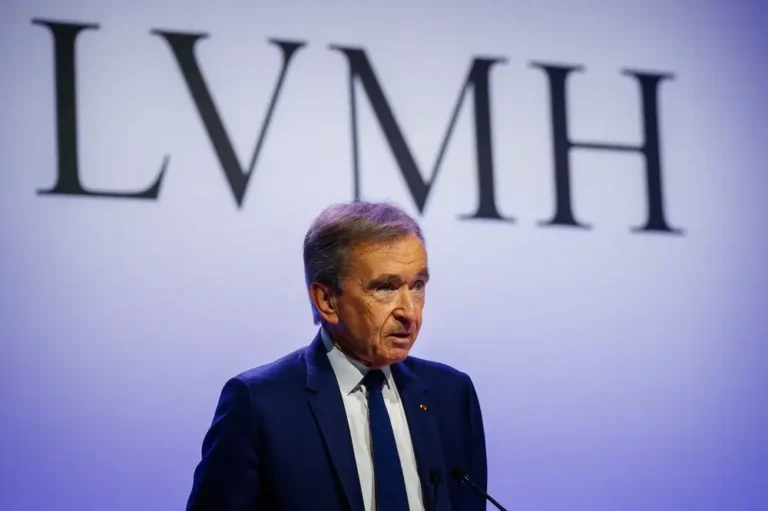A fund manager beating 90% of peers in 2023 after getting crushed last year shares the unconventional investing philosophy that sets him apart — and why Nvidia and these 5 other stocks will keep dominating

- Growth stocks got wiped out in 2022 but have rebounded with force this year.
- Michael Sansoterra’s Virtus Silvant Large-Cap Growth Fund has far outperformed its benchmark index.
- The top fund manager shared his investing philosophy and six top stocks to buy now.
It’s no surprise that Michael Sansoterra’s large-cap growth mutual fund led the way in 2023.
Six of his top eight holdings in his Virtus Silvant Large-Cap Growth Fund (STCIX) are among the top 20 S&P 500 performers this year. From Nvidia and Meta Platforms to Eli Lilly and Alphabet, Sansoterra’s fund, which he’s run since 2007, is in the top 10% in 2023 and the top 15% in the last five years, according to Morningstar.
That performance is quite different from last year, when Sansoterra’s fund fell more than 29% while still finishing in the top half of its category. Instead of reinventing the wheel, Silvant Capital Management’s chief investment officer bounced back by sticking to his plan.
“The key to success has been staying with our investment theses, and in this case, some of the stocks that underperformed in 2022,” Sansoterra told Insider in a recent interview. “We not only kept — and in some instances added — and that allowed us to recognize the longer-term trends that we still thought were in place but we weren’t necessarily rewarded for.”
Exceed generic growth to achieve abnormal returns.
Outperforming an index is difficult at any time, but it is especially difficult in the crowded, competitive large-cap growth space. Companies in this sector of the stock market are well-known by analysts, fund managers, and retail investors alike, in contrast to the often-ignored small caps.
“There’s a lot of analysts looking at these stocks very closely, and it’s hard to find inefficiencies in the market,” Sansoterra said in a statement. “They’re there, but they’re just a little bit harder to find.”
Sansoterra, along with co-manager Sandeep Bhatia, seeks companies that will grow faster than the market expects. The two investors choose stocks from the bottom up rather than the top down, which means that mispriced opportunities can exist in any sector or industry.
“We want to make or break ourselves on stock selection — not big sector weights, not big style biases, et cetera,” he said. “And many money managers are looking for quality growth, GARP-y growth, momentum growth, high beta growth, and so on.” Only when that style bias is in their favor will they outperform. We want to be as much of a year-round portfolio as possible.”
According to Morningstar data, Sansoterra’s fund has delivered solid relative returns in almost every imaginable environment. This is due, in part, to his broader definition of growth, which extends beyond traditional sectors such as technology or communication services.
“We’re happy to have that broader conversation around the conditions for growth — not growth as a category, but as a condition,” Sansoterra said in a press release. “I think that’s the main thing that allows us to spread our returns across different sectors and themes, and sets us apart in a space where everyone looks the same.” We haven’t reinvented the wheel here, but that’s what sets us apart.”
Sansoterra’s growth fund also stands out because he and his colleagues at Silvant Capital Management have identified catalysts for hundreds of stocks in their coverage universe over the last decade and a half.
According to the fund manager, each of these stocks is assigned three to six fundamental factors that are critical to their business. If the conditions for growth are favorable and the stock has momentum, it is considered buy-worthy. Otherwise, the team observes and awaits changes.
“This allows us to stay focused on the things we think are the most important, and then that allows us to ultimately say, ‘When these things inflect, we’re going to buy these stocks, and when they crack, we trim ’em, and if they break, we sell ’em,'” he said. “Which allows us to stay with stocks a little bit longer than I think some of our competitors as well, because it’s a little bit of a bigger-picture focus per company.”
Because of this company-specific approach, Sansoterra isn’t concerned with which bucket a company belongs to. He stated that he owns low-cost and high-cost stocks, as well as companies that are economically sensitive and those that generate their own growth.
6 best-performing stocks to buy right now
While Sansoterra’s fund does not favor any particular sectors or styles, he claims it is particularly exposed to the artificial intelligence theme and industries such as pharmaceuticals, gaming, and hotels and leisure.
The fund manager highlighted six stocks that have high relative weights in his fund. The names are listed below, along with their ticker, market capitalization, previous close, and thesis.
1. Eli Lilly
Ticker: LLY
Market cap: $580.1B
Previous close: $610.50
Thesis:
Tirzepatide, also known as Mounjaro, appears to be a new kingmaker drug for this pharmaceutical behemoth. Mounjaro received FDA approval in May 2022 to aid in weight loss and has since become a sensation.
As investors consider Mounjaro’s enormous potential, Eli Lilly shares are up 66% in 2023. Given the massive total addressable market for weight loss, Sansoterra believes Mounjaro’s potential is limitless. It is, however, up against Novo Nordisk’s Ozempic and Wegovy.
“The expectations, the Wall Street models — they’re all very wrong, and that’s a great problem to have,” Sansoterra went on to say. “Is it priced in yet?” That brings us to the next question.”
2. Nvidia
Ticker: NVDA
Market cap: $1,160B
Previous close: $469.45
Thesis: The top-performing stock in the S&P 500 shows no signs of slowing down. If artificial intelligence comes anywhere close to reaching the potential that Wall Street sees, Nvidia will be arguably the biggest beneficiary because it is the undisputed AI pioneer.
“We think that the artificial intelligence, the large language models and generative AI, is the next generation of technology as much as the internet was, as much as servers were, as much as PCs were,” Sansoterra said in an interview. “And that’s a long-tail process.”
“These guys have a 90%+ market share,” Sansoterra continued. The processing space includes more than just hardware. There’s a software stack here, as well as the CUDA protocol and a large number of defendable positions. Everyone is vying for this space now, but you’re seeing a company that’s beating and raising in epic proportions — billions and billions of dollars. This isn’t a gimmick; this is real money.”
3. Microsoft
Ticker: MSFT
Market capitalization: $2,460B
Previous closing price: $331.16
Thesis: Microsoft’s prescient decision to invest in ChatGPT creator OpenAI will pay dividends for many years, Sansoterra said — both literally and figuratively.
“Their AI investments, although not quite as all-encompassing as Nvidia’s, are going to allow them to raise revenue, raise prices, provide better solutions for clients, which will show direct ROI,” Sansoterra said in a statement. “Not to mention, they’re already entrenched in every major corporation anyway, so you’ve got a highly leveraged model.”
Few companies are as well-positioned for the late 2020s and 2030s as the Redmond-based tech giant, in Sansoterra’s view.
“Microsoft has done an incredibly good job over the very, very long term of always writing checks in the places where they knew they had to be competitive,” he said. “Most firms come late — too little, too late. It’s why it’s so difficult to be a consistently good technology company over multiple cycles.”
4. Boeing
Ticker: BA
Market capitalization: $115.4 billion
Previous closing price: $191.30
Thesis: This aircraft manufacturer has an oligopoly with Airbus and has an excellent opportunity as aircraft production returns to normal following the pandemic, according to Sansoterra. Boeing shares have risen and will continue to rise as supplier issues are resolved, he added.
5. Meta Platforms
Ticker: META
Market capitalization: $834.1B
$324.16 was the previous close.
Thesis: Despite being rocked in 2022 by an advertising-market downturn and Apple’s privacy protocol changes, Facebook’s parent company has been by far the second-best stock in markets this year. The company has reduced spending in its experimental metaverse arm, which has helped its bottom line as ad spending has returned to the platform.
“The reality is, people keep coming back to those platforms because of their size and scale,” Sansoterra said in a statement. “Their size and scale makes them very, very compelling.”
6. General Electric
Ticker: GE
Market capitalization: $121.2B
Last close: $111.33
Thesis: For years, General Electric shares were worthless, but they have more than doubled in the last year. Investors had long avoided the convoluted conglomerate, which was perceived to be trading at a discount to the sum of its parts. However, Sansoterra believes that once GE spins off its side businesses and focuses on its core aerospace division, there is no reason not to buy it.
“They’ve narrowed it down,” said Sansoterra. “They got rid of all the detritus of those other businesses that were the Jack Welch legacy, but they were obstructing any potential growth of that company.” And once those pieces have been sold, it must have a new look. And the problem is that investors’ behavioral aspects say, ‘It’s GE — it’s garbage; we don’t want that anymore.’ But take a look at the numbers.”






